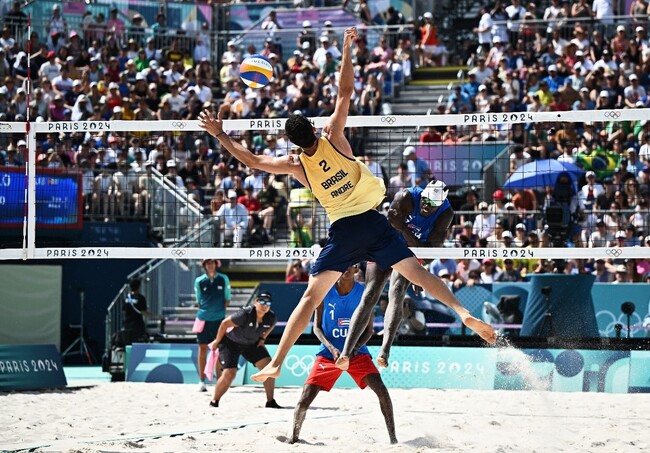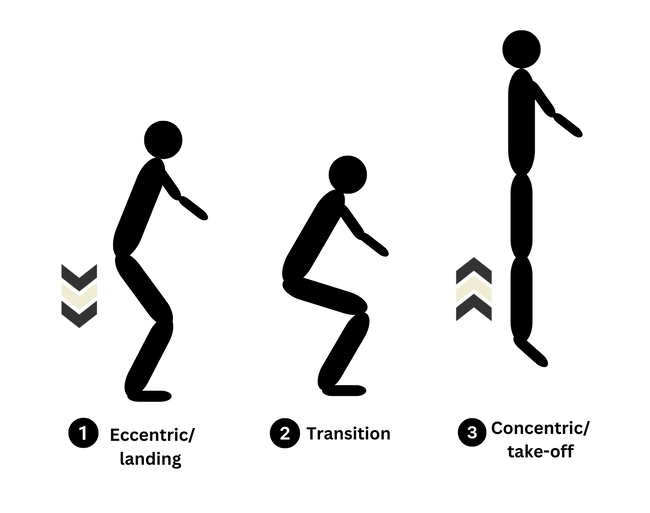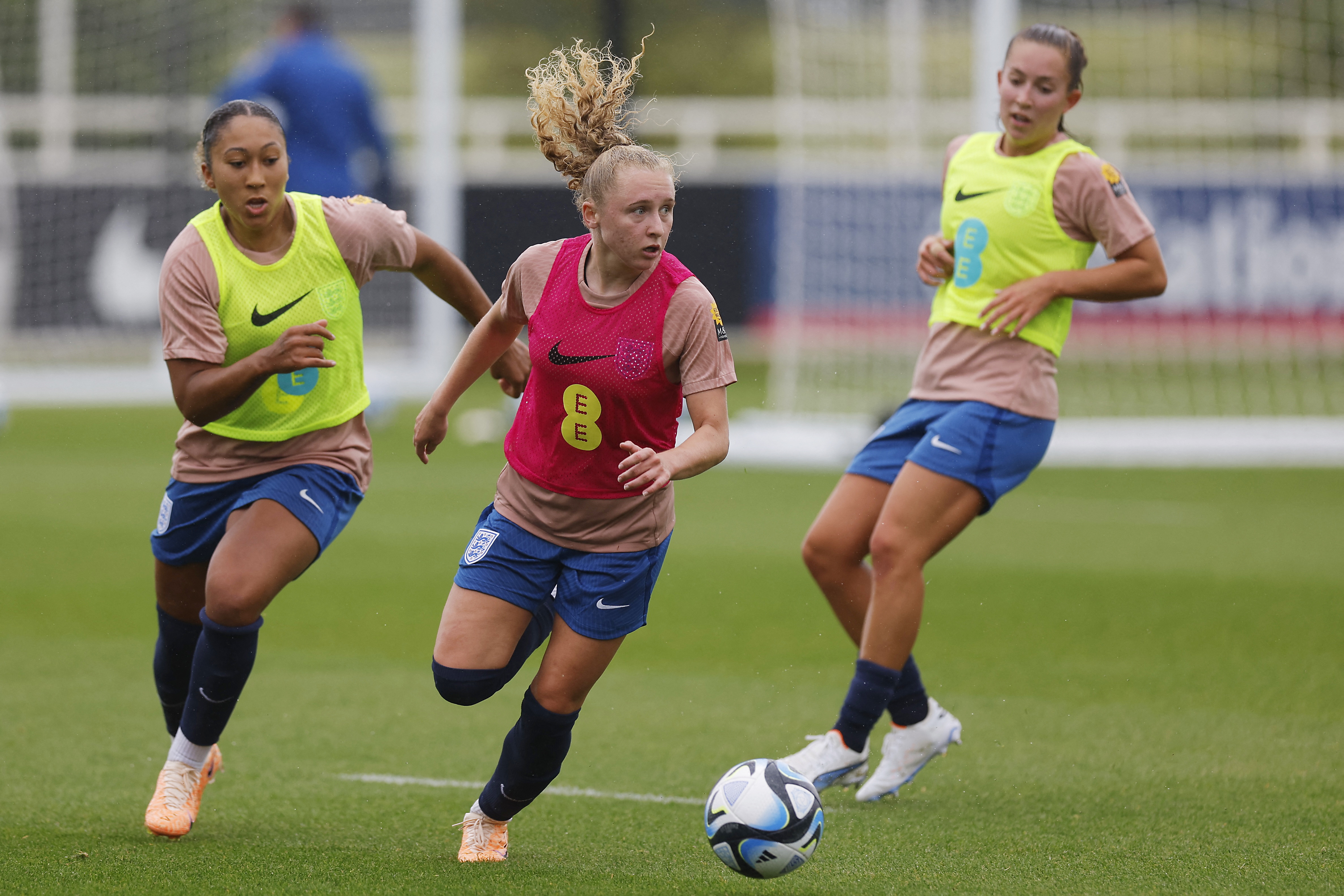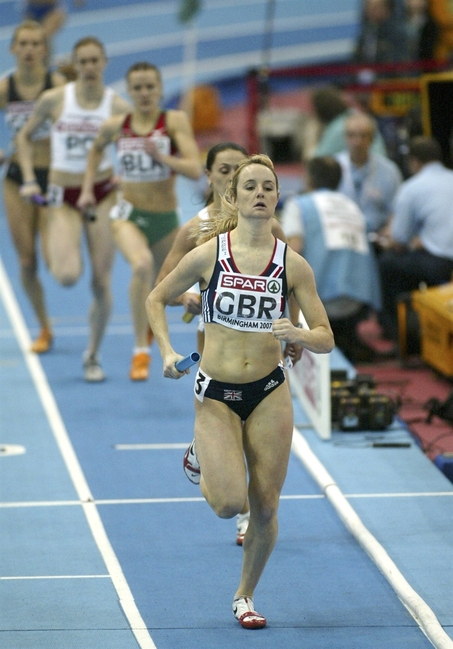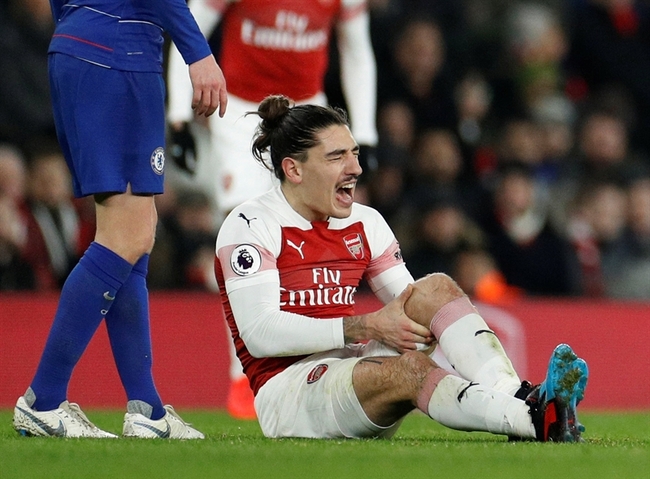You are viewing 1 of your 1 free articles
Rehabilitation Leaps
Plyometrics have become integral to post-injury rehabilitation programs and a crucial stage of next-level performance enhancement. Tracy Ward leaps into the science and explains how to jump right in.
Paris 2024 Olympics - Beach Volleyball - Eiffel Tower Stadium, Paris, France Andre Loyola Stein of Brazil in action. REUTERS/Arlette Bashizi
Plyometrics involve a series of jumps, hops, bounds, or ballistic-type movements characterized by quick ground contact time and a rapid stretch-shortening cycle (SSC)(1). This rebound activity capitalizes on the neuromuscular and physiological properties of the musculotendon unit (MTU) to increase the muscle’s potential to maximize the force produced within the shortest time possible(2).
Russian national track and field coach Dr Verkhosshanski initially described plyometrics as the shock method or shock training(3). Then, the American coach Fred Wilt conceived the term in 1975. The term is derived from the Greek words plyo, which means to increase, and metric, which means to measure, collectively giving the purpose of plyometrics to improve the measurement(2). The measurement is any sports performance outcome that can be measured through tests such as jump height, speed, throwing, or serve velocity(2,4).
Each of these elements requires power development, a key component of plyometric training. Plyometrics mimics specific short-duration high-intensity actions within sports and is critical in strength and conditioning and performance enhancement programs(5). For example, football and basketball players require rapid direction changes in all planes. Furthermore, endurance runners or cyclists would benefit from plyometric training, allowing their muscles to produce greater force with less energy.
Plyometrics are also beneficial in injury prevention by improving joints’ range of motion and throwing velocity. For example, professional baseball pitchers will reach velocities of 80-100 miles per hour, with their shoulder joints moving more than 6000 degrees/second(6). Further benefits occur in the terminal phase of rehabilitation, where the aim is to rehabilitate the athlete as quickly as possible and provide a safe return to sports, e.g., plyometric training in anterior cruciate ligament rehabilitation (ACL) can improve force distribution(7,8).
Plyometric Phases
Plyometrics involve a rapid eccentric (muscle lengthening) contraction, a concentric (muscle shortening) contraction, and a transition in between. Blending these three phases produces the plyometric movement and influences the muscle’s power performance (see figure 1)(2).
Eccentric/landing phase: The MTU’s muscle spindle and the non-contractile tissues within the muscle are stretched, causing the MTU to deform under load and eccentrically lengthen.
Transition phase: This is the time to re-bound between the eccentric and concentric phases and equates to the time to overcome the negative work of the pre-stretch to generate force production in the concentric phase. The kinetic energy used in the eccentric phase is transferred and stored as elastic potential energy relative to the degree of tendon stiffness. The muscles are working isometrically. This phase needs to be as short as possible to allow the stored energy to be used efficiently in the transition and avoid dissipating.
Concentric/take-off phase: The stored energy is converted back to kinetic energy to accelerate the muscle contraction and elastic recoil and propel the force of movement into the applied direction. The muscle concentrically contracts explosively.
Implementing Plyometrics
Lower-body Exercise
Table 1: Plyometric jump progressions.
| Beginner | Intermediate | Advanced |
| Squat jumps | Jump and reach | Depth jumps |
| Split squat jumps | Medial and lateral jumps | Box jumps |
| Skipping | Anterior and posterior jumps | Single-leg hops |
| Lateral bounding | Double-leg tuck jumps | Drop jump to the second box |
| Pike jumps | Squat depth jump | |
|
Zigzag jumps
|
Table 2: Volume guidelines for lower-body plyometric exercises(11)
| Athlete level | Low-intensity drills | Moderate-intensity drills |
High-intensity drills
|
| Beginner | 80-100 contacts | 60 contacts | 40 contacts |
| Intermediate | 100-150 contacts | 80-100 contacts | 60-80 contacts |
| Advanced | 140-200 contacts | 100-120 contacts | 80-100 contacts |
Upper-body Exercises
Table 3: Progressions of upper-extremity plyometric exercises(2,11).
|
Beginner
|
Intermediate | Advanced |
| Wall dribbling with two hands | Medicine ball throws with increased weight, frequency, and intensity | Medicine ball throws with further increased weight, frequency, and intensity |
| Medicine ball throws/chest pass | Resistance band exercises with isometric holds and perturbation training | Resistance band exercises with greater isometric hold and perturbation training |
| Resistance band exercises | Rhythmic stabilizations with increased intensity and volume | Rhythmic stabilizations with further increased intensity and volume |
| Rhythmic stabilizations (perturbation training) | Kneeling falls | Clap push-ups in a full push-up position |
| Clap wall push-ups | Shot putt | Eccentric drop/rebound push-ups |
| Clap push-ups in a quadruped position | ||
| Eccentric drop push-ups |
Table 4: Volume guidelines for upper-body plyometric exercises(2).
| Volume parameters | Plyometric training programs |
| Repetitions | 5-10 reps/set (Contacts per session are consistent at 30-50 contacts regardless of athlete) |
| Sets | 1-3 sets per exercise |
| Frequency | 2 x week |
| Rest intervals |
60 seconds between exercises. 48 hours between sessions |
| Intensity | 80-100% MVC |
| Duration | 6-8 weeks |
Contraindications
Key Considerations
Plyometrics adopts a number of catchphrase sayings that, when implemented, can keep you on the right track to successful use.
- Ensure adequate strength before progressing to more advanced plyometric exercises
- Contact time > jump height
- Emphasize intent on movement
- Ensure adequate rest between efforts
- Double before single limb
- Short before long
- Slow before fast
- Vertical before horizontal
- Single before repeated effort
- Quality over quantity
References
Newsletter Sign Up
Subscriber Testimonials
Dr. Alexandra Fandetti-Robin, Back & Body Chiropractic
Elspeth Cowell MSCh DpodM SRCh HCPC reg
William Hunter, Nuffield Health
Newsletter Sign Up
Coaches Testimonials
Dr. Alexandra Fandetti-Robin, Back & Body Chiropractic
Elspeth Cowell MSCh DpodM SRCh HCPC reg
William Hunter, Nuffield Health
Be at the leading edge of sports injury management
Our international team of qualified experts (see above) spend hours poring over scores of technical journals and medical papers that even the most interested professionals don't have time to read.
For 17 years, we've helped hard-working physiotherapists and sports professionals like you, overwhelmed by the vast amount of new research, bring science to their treatment. Sports Injury Bulletin is the ideal resource for practitioners too busy to cull through all the monthly journals to find meaningful and applicable studies.
*includes 3 coaching manuals
Get Inspired
All the latest techniques and approaches
Sports Injury Bulletin brings together a worldwide panel of experts – including physiotherapists, doctors, researchers and sports scientists. Together we deliver everything you need to help your clients avoid – or recover as quickly as possible from – injuries.
We strip away the scientific jargon and deliver you easy-to-follow training exercises, nutrition tips, psychological strategies and recovery programmes and exercises in plain English.
